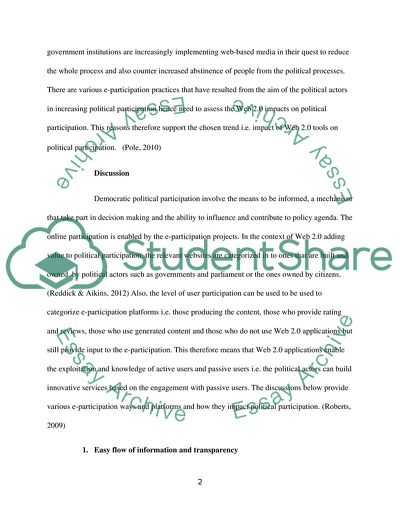Cite this document
(The Impact That Web 2.0 Has on Political Participation Essay Example | Topics and Well Written Essays - 2250 words, n.d.)
The Impact That Web 2.0 Has on Political Participation Essay Example | Topics and Well Written Essays - 2250 words. https://studentshare.org/information-technology/1821662-the-impact-that-web-20-has-on-political-participation
The Impact That Web 2.0 Has on Political Participation Essay Example | Topics and Well Written Essays - 2250 words. https://studentshare.org/information-technology/1821662-the-impact-that-web-20-has-on-political-participation
(The Impact That Web 2.0 Has on Political Participation Essay Example | Topics and Well Written Essays - 2250 Words)
The Impact That Web 2.0 Has on Political Participation Essay Example | Topics and Well Written Essays - 2250 Words. https://studentshare.org/information-technology/1821662-the-impact-that-web-20-has-on-political-participation.
The Impact That Web 2.0 Has on Political Participation Essay Example | Topics and Well Written Essays - 2250 Words. https://studentshare.org/information-technology/1821662-the-impact-that-web-20-has-on-political-participation.
“The Impact That Web 2.0 Has on Political Participation Essay Example | Topics and Well Written Essays - 2250 Words”. https://studentshare.org/information-technology/1821662-the-impact-that-web-20-has-on-political-participation.


